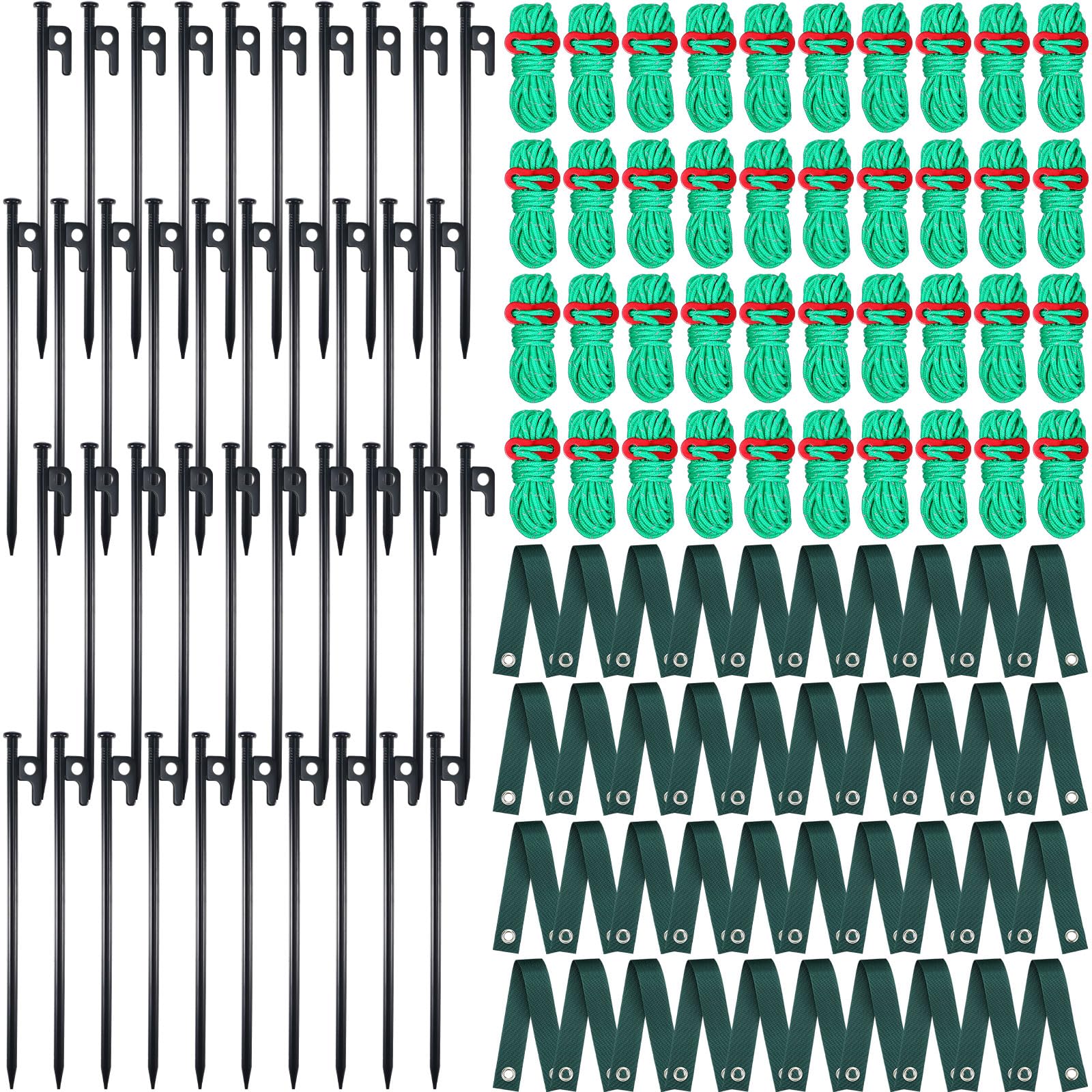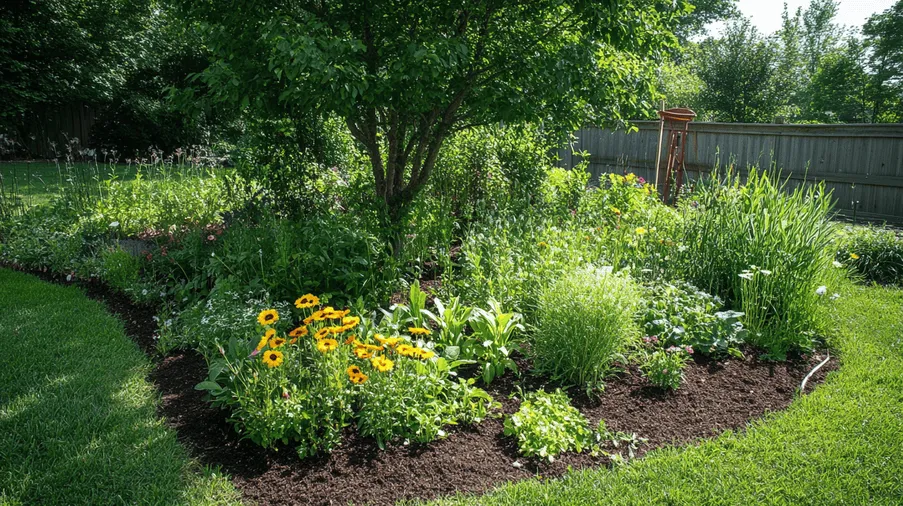A couple of summers ago I planted a small apple tree in my backyard. I had this big dream of picking my own apples for homemade pies. I’d wander out there every morning with my coffee, just staring at it, hoping it would grow faster.
But it didn’t take long to realize fruit trees need more than just water and sunshine. Aphids started chewing up the leaves, I barely saw any bees when it bloomed, and the soil was so hard it felt like concrete. I was about ready to give up.
Then my neighbor, who’s been gardening forever, told me about companion planting. She said certain plants could help my tree by keeping bugs away and bringing in pollinators. I was skeptical, but I figured I had nothing to lose. Turns out, it was the best gardening tip I’ve ever gotten.
My tree is doing so much better now, and I’m actually getting apples worth bragging about. If you’ve got fruit trees or you’re thinking of planting some, stick around. I’m going to share what I’ve learned about companion plants and how they can help your trees thrive.
Why Companion Planting Works for Fruit Trees
First let’s talk about why companion planting is such a game-changer. Fruit trees, whether they’re apples, pears, cherries, or citrus, face a lot of challenges. Pests like aphids and codling moths can wreak havoc, diseases like powdery mildew can sneak in, and poor soil can stunt their growth. On top of that, they need pollinators like bees to show up at the right time to ensure a good harvest. Companion plants can help with all of these things, often in ways that feel almost too good to be true.





Some plants attract beneficial insects that eat the bad guys—like ladybugs that gobble up aphids. Others improve the soil by adding nutrients or breaking up hard dirt so your tree’s roots can stretch out. And then there are the ones that act like a natural shield, repelling pests with their scent or even masking the tree’s presence so bugs don’t notice it. I’ve seen this firsthand with my own trees—once I started adding companions, I noticed fewer pest problems and happier, healthier trees.
But it’s not just about defense. Companion plants can also bring more pollinators to your garden, which means more fruit. And let’s be honest, they make your garden look prettier too. It’s a win-win! Let’s break down some of the best companion plants for fruit trees and how they can help your orchard thrive.
Pest-Repelling Companions—Nature’s Bodyguards
One of the biggest headaches for fruit tree growers is pests. I’ll never forget the summer I found codling moth larvae in my apples—it was heartbreaking to toss out so much fruit. That’s when I started looking into plants that could naturally keep pests at bay, and I was amazed at how well they worked.
- Marigolds: These bright little flowers are like the bouncers of the garden. They give off a scent that repels pests like aphids, nematodes, and even some beetles. I plant a ring of marigolds around the base of my apple trees every spring, and I swear I’ve seen fewer bugs since I started. Plus, they add a pop of color that makes the garden feel alive.
- Garlic: If you’ve ever chopped garlic and noticed how strong it smells, you can imagine why pests don’t like it. Garlic repels pests like aphids, spider mites, and even larger critters like deer. I tuck a few garlic bulbs around my cherry tree, and it seems to keep the aphids at a distance. Bonus: you can harvest the garlic for your kitchen!
- Chives: These oniony little plants are great for keeping pests like aphids and Japanese beetles away. They also attract pollinators, which is a double win. I’ve got a small patch of chives near my pear tree, and I love how low-maintenance they are—just plant them and let them do their thing.
One thing to keep in mind: these plants work best when you plant them close to the tree, but not so close that they’re competing for water or nutrients. I usually leave a foot or two of space between the tree trunk and the companions to give everyone room to breathe.
Pollinator Magnets—Bringing in the Bees
Fruit trees need pollinators to set fruit, and I learned this the hard way with my first plum tree. It bloomed beautifully, but I barely got any plums that year because there weren’t enough bees around. Companion plants that attract pollinators can make a huge difference, and they’re some of my favorites to grow.





- Lavender: Bees go crazy for lavender, and I can’t blame them—it smells amazing! I planted a few lavender bushes near my citrus trees, and I’ve noticed more bees buzzing around during bloom time. Lavender also repels some pests like moths, so it’s pulling double duty.
- Borage: This herb is a pollinator magnet with its star-shaped blue flowers. It attracts bees and other beneficial insects, and it’s also said to improve the flavor of nearby fruit—though I’m not sure I can taste the difference, I’m happy to have more bees around. Borage self-seeds easily, so once you plant it, you’ll have it for years.
- Yarrow: With its clusters of tiny flowers, yarrow draws in bees, butterflies, and even predatory insects like hoverflies that eat aphids. I’ve got some white yarrow near my peach tree, and it’s become a little hub of activity during the spring.
When I started adding these plants, I was amazed at how much busier my garden got. More bees meant more fruit, and it felt like the whole ecosystem was working together. Just make sure to plant these a bit farther out—say, 5 to 10 feet from the tree—so the bees have a clear path to the blossoms.
Soil Helpers—Feeding Your Trees from the Ground Up
Healthy soil is the foundation of a thriving fruit tree, and some companion plants can improve the dirt in ways that synthetic fertilizers can’t. These plants either add nutrients, improve soil structure, or both, giving your trees a better shot at growing strong.
- Comfrey: This plant is a soil superhero. Its deep roots pull up nutrients like potassium and phosphorus from way down in the ground, and when you chop the leaves and let them decompose around your tree, those nutrients go right into the soil. I mulch my apple trees with comfrey leaves every summer, and I’ve noticed the trees seem greener and more vigorous.
- Clover: Clover is a nitrogen-fixer, which means it takes nitrogen from the air and puts it into the soil where your tree can use it. Nitrogen is like a growth booster for plants, and fruit trees love it. I’ve got a patch of white clover growing around my pear tree—it acts like a living mulch, keeping the soil moist and adding nutrients at the same time.
- Lupines: These tall, spiky flowers are also nitrogen-fixers, and they’re gorgeous to boot. They work well in larger spaces, so I planted a few near my standard-sized apple tree. They’ve been a great addition, and I love how they make the orchard look a bit wild and natural.
One tip: if you’re using plants like comfrey or clover, don’t let them grow too thick right up against the tree trunk. They can hold too much moisture there and cause rot. I keep them a few inches away and let them spread out around the drip line instead.
Ground Covers—Keeping Weeds at Bay
Weeds are the bane of my existence as a gardener. They compete with my fruit trees for water and nutrients, and pulling them out feels like a never-ending chore. Ground cover plants can help by smothering weeds and keeping the soil cool and moist, which your trees will thank you for.
- Nasturtiums: These trailing plants are great for covering the ground around fruit trees. They also repel pests like aphids and attract beneficial insects, so they’re doing a few jobs at once. I’ve got nasturtiums around my citrus tree, and I love how their bright orange flowers peek out from under the branches.
- Thyme: This low-growing herb is tough as nails and smells amazing when you step on it. It keeps weeds down and repels some pests, too. I planted creeping thyme around my dwarf apple tree, and it’s been a lifesaver during hot summers—it keeps the soil from drying out too fast.
- Strawberries: If you want a ground cover that gives you something to eat, strawberries are a fun choice. They spread out nicely, keep weeds in check, and you get a bonus crop. I’ve got a few strawberry plants near my cherry tree, and my kids love picking them while I’m tending the garden.
Just a heads-up: ground covers can sometimes get a bit too cozy with your tree’s roots, so keep an eye on them. I check every few months to make sure they’re not crowding the tree too much.





Plants to Avoid—Not All Neighbors Are Friendly
Not every plant is a good companion for fruit trees, and I learned this the hard way with my peach tree. I planted some mint nearby, thinking it would repel pests, but it ended up taking over and stealing water from the tree. Here are a few plants to steer clear of:
- Mint: It’s super invasive and will compete with your tree for resources. If you want to use mint, keep it in a pot.
- Black Walnut: These trees release a chemical called juglone that can harm fruit trees. Keep them far away.
- Potatoes: They can attract pests like wireworms that might go after your tree’s roots, and they compete for nutrients.
I’ve found it’s better to be picky about who your trees hang out with. A bad neighbor can cause more trouble than it’s worth.
Putting It All Together—My Companion Planting Plan
Here’s how I’ve set up my own little orchard, and it’s been working like a charm. Around my apple trees, I’ve got a ring of marigolds and garlic to keep pests away, a patch of clover to fix nitrogen, and some lavender a bit farther out to bring in the bees. Near my peach tree, I’ve added nasturtiums as a ground cover and some yarrow for pollinators. And for my cherry tree, I’ve got chives and strawberries doing their thing.
The key is to mix and match based on your needs. If pests are your biggest issue, focus on marigolds and garlic. If you’re worried about pollination, go heavy on lavender and borage. And if your soil needs help, comfrey and clover are your best bets. It’s all about finding the right balance for your garden.
Wrapping It Up: A Thriving Orchard, One Plant at a Time
Companion planting has been a total game-changer for my fruit trees, and I’m betting it will be for yours too. By adding plants like marigolds, lavender, comfrey, and nasturtiums, you’re not just helping your trees—you’re building a little ecosystem where everything works together. Fewer pests, more pollinators, better soil, and a prettier garden—what’s not to love?
When I walk through my orchard now, I can’t help but smile. The bees are buzzing, the trees are loaded with fruit, and it feels like everything is in harmony. It took a bit of trial and error to get here, but that’s the fun of gardening, right? So, go ahead and give companion planting a try. Your fruit trees will thank you, and you’ll be amazed at how much better they thrive. What companions are you thinking of trying? I’d love to hear about your garden adventures. Happy planting!

